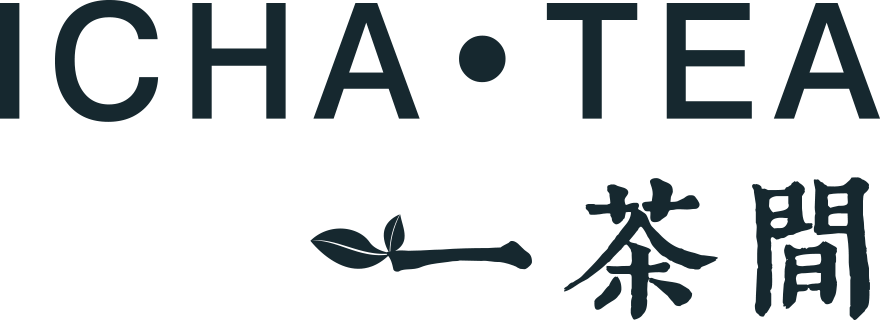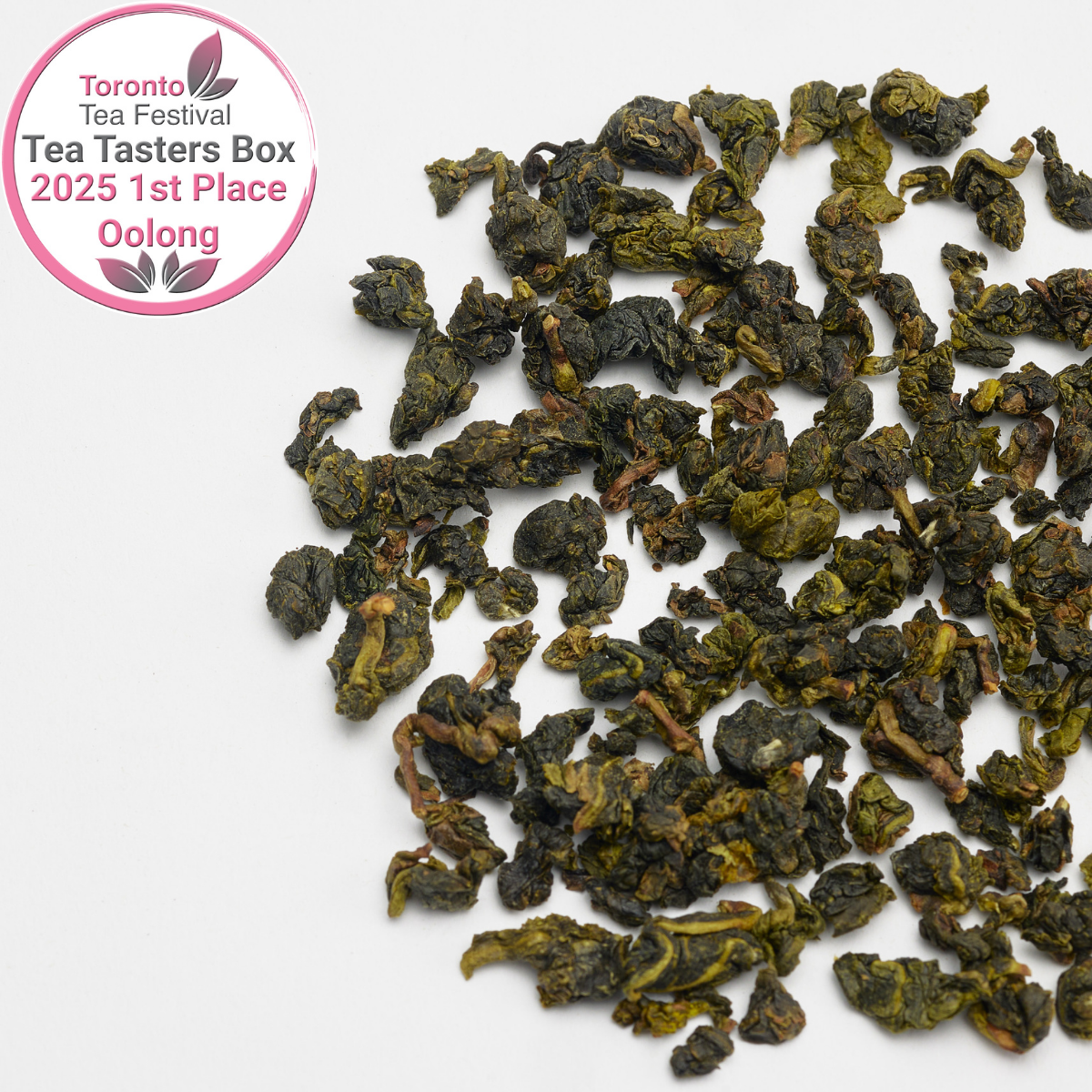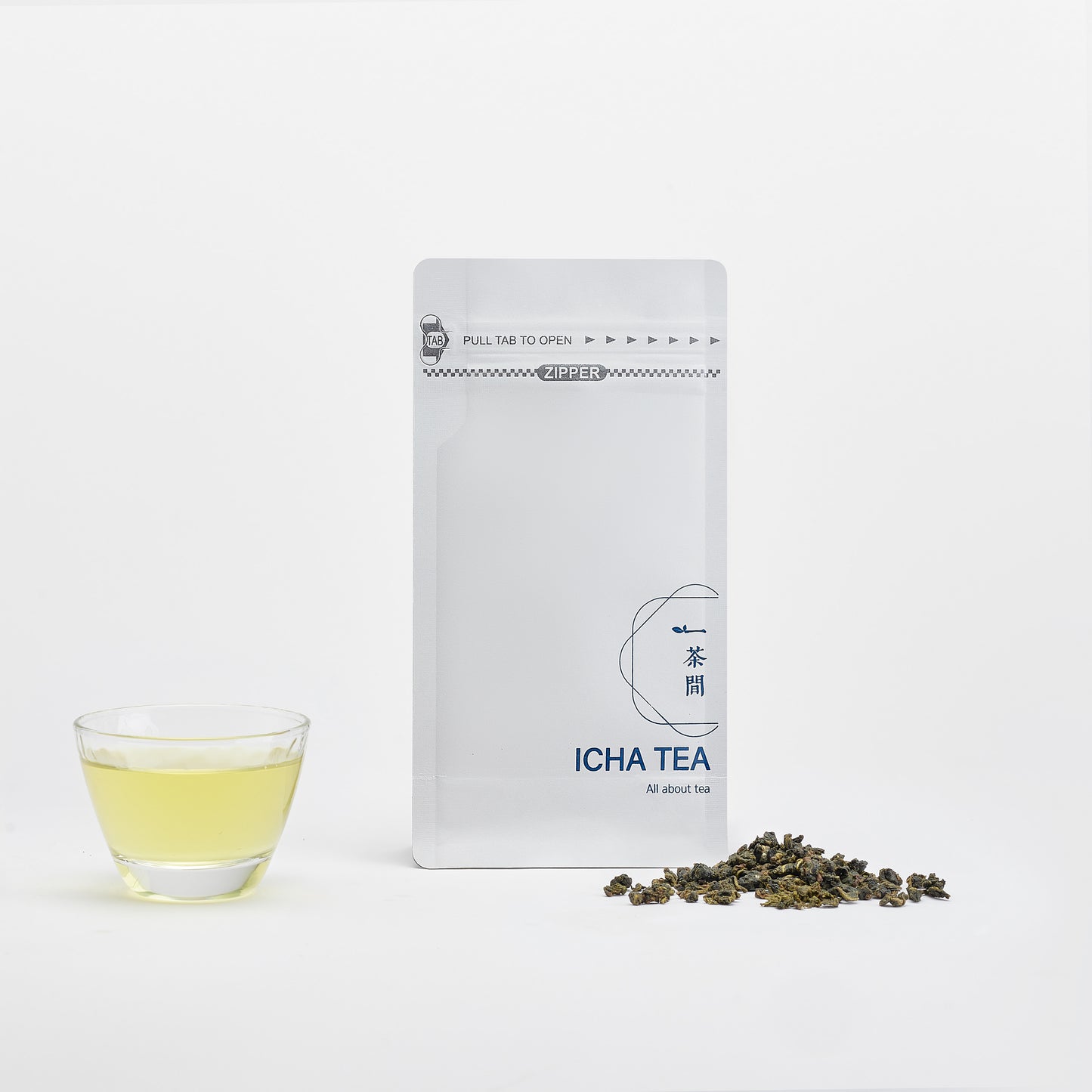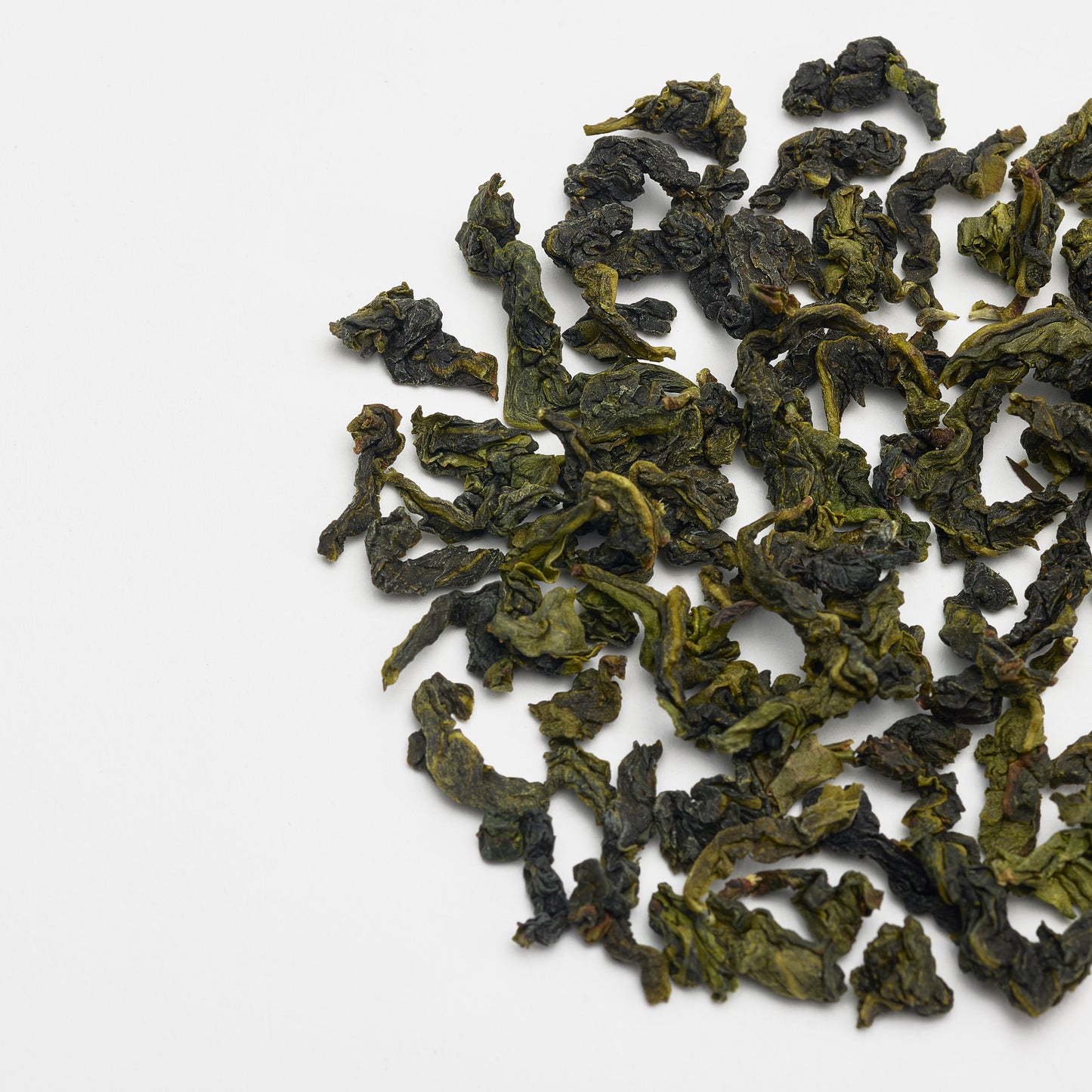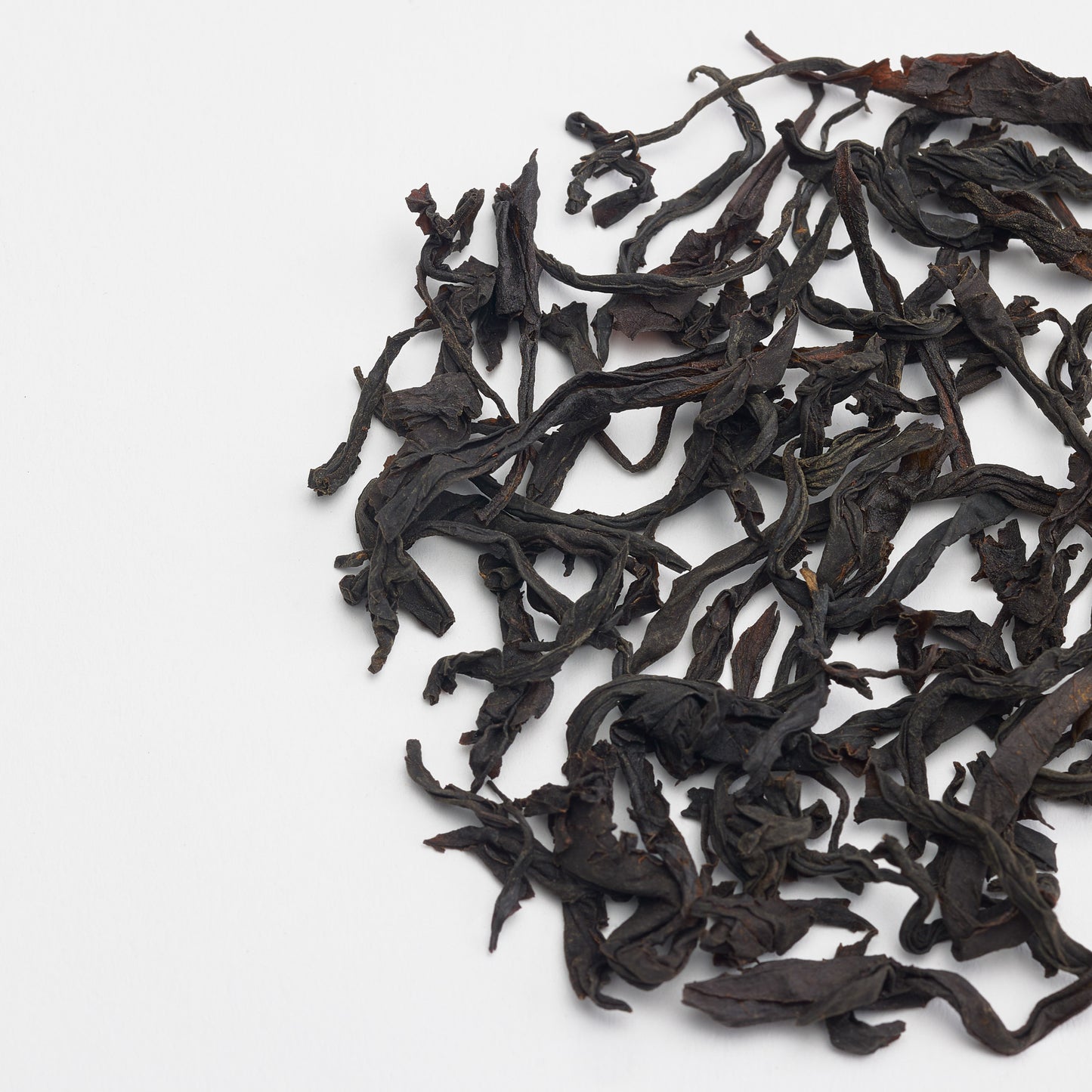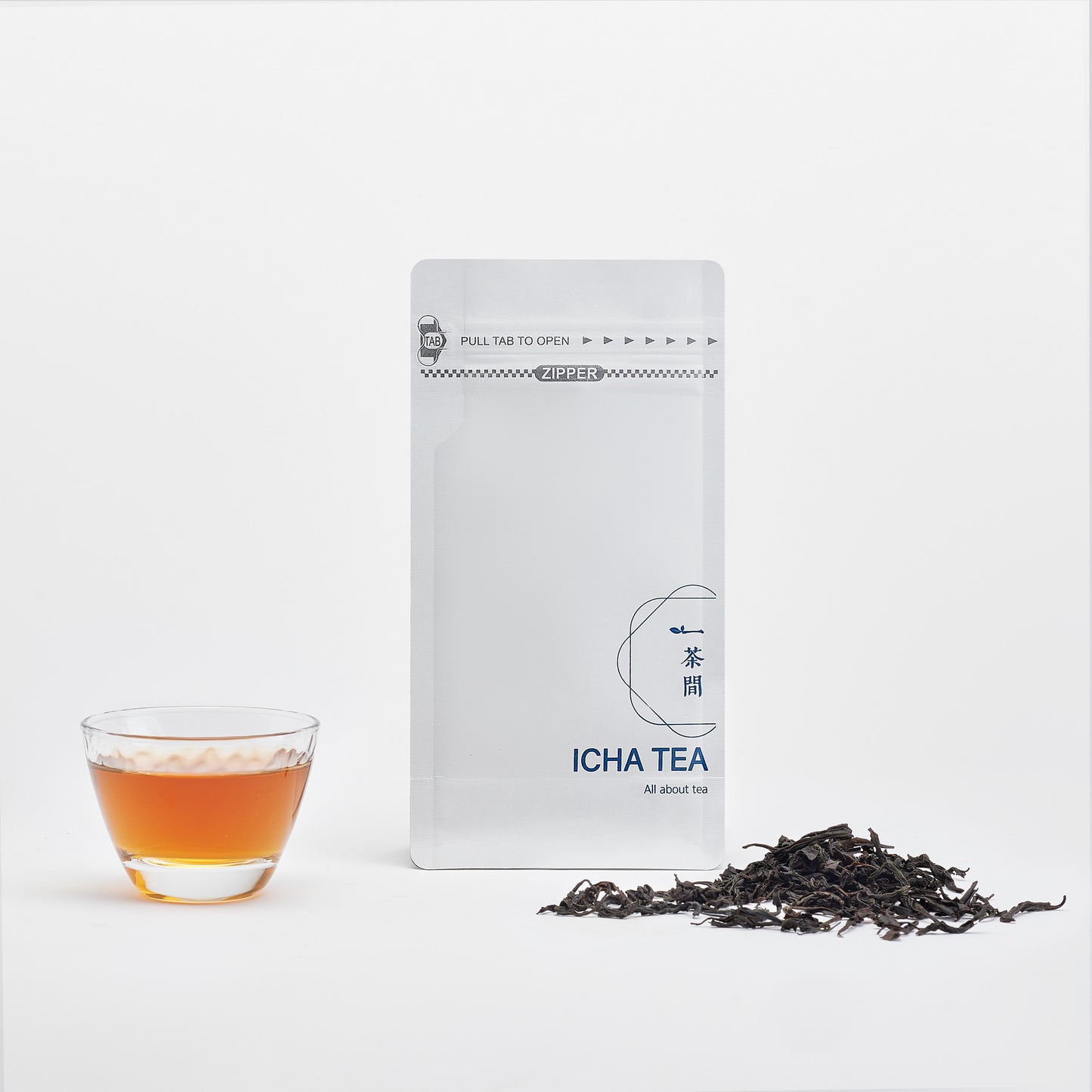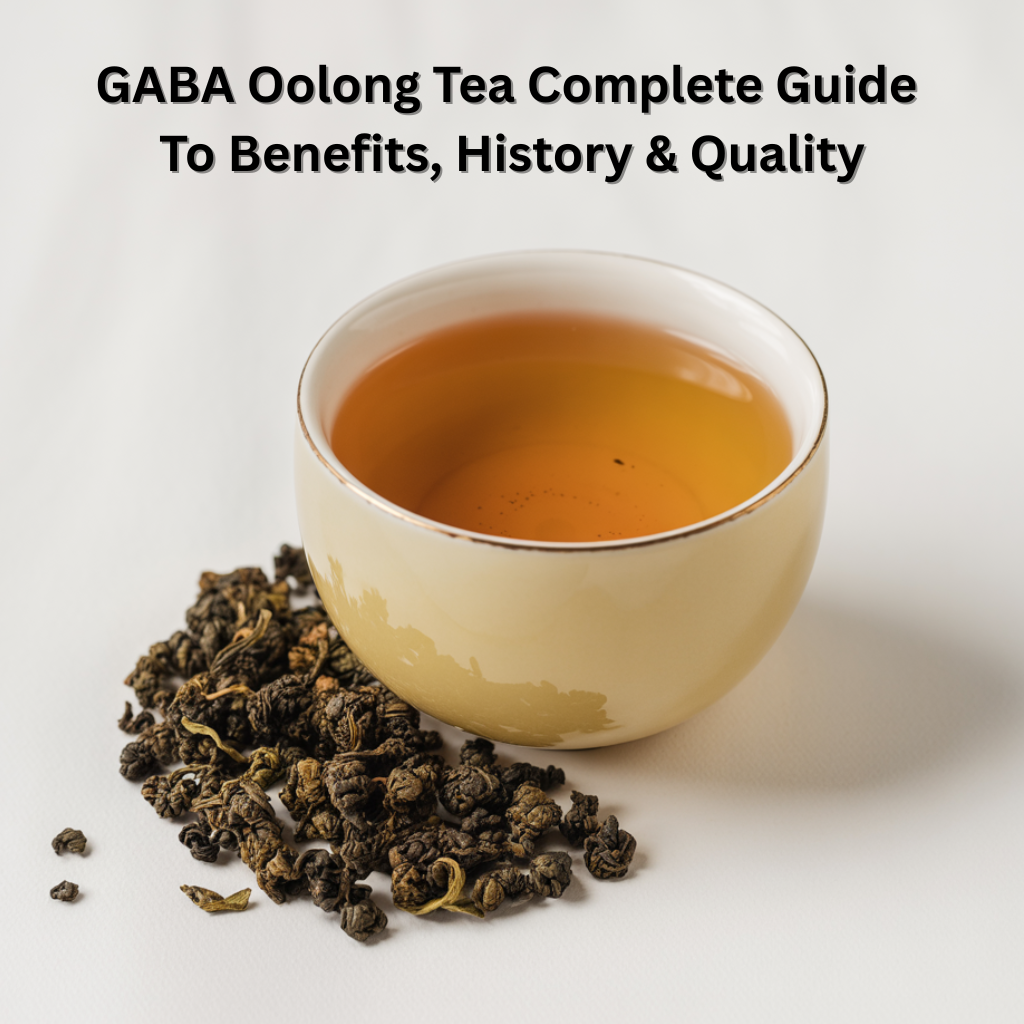
In the world of wellness teas, few beverages combine ancient craftsmanship with modern scientific innovation quite like GABA oolong tea. This remarkable brew, also known as "Gabaron" tea⁴, represents a perfect marriage between traditional Taiwanese tea-making artistry and cutting-edge nutritional science. What sets GABA oolong apart from conventional teas is its extraordinary dual health profile: the natural antioxidants and polyphenols found in premium oolong tea, enhanced with dramatically elevated levels of gamma-aminobutyric acid (GABA).
While regular tea contains modest amounts of GABA (5-10mg per 100g), specially processed GABA oolong delivers an impressive 150-400mg per 100g through innovative anaerobic fermentation techniques⁴. This transformation has positioned Taiwan as the world's leading producer of GABA tea, elevating what was once a Japanese innovation into a premium wellness beverage recognised throughout Asia as a "health tea"¹. From stress reduction to improved sleep quality, GABA oolong offers science-backed benefits that make it far more than just another cup of tea.
Understanding GABA: The Calming Neurotransmitter
What is GABA?
Gamma-aminobutyric acid, commonly known as GABA, serves as the brain's primary inhibitory neurotransmitter, playing a crucial role in promoting calmness and relaxation throughout the nervous system. This naturally occurring amino acid acts like the brain's natural brake pedal, slowing down excessive neural activity and helping to maintain mental balance².
In the human body, GABA is essential for regulating anxiety, promoting restful sleep, and supporting overall neurological wellness. When GABA levels are optimal, we experience a sense of calm alertness—relaxed yet focused, peaceful without drowsiness. This delicate balance makes GABA particularly valuable in our stress-filled modern world.
The remarkable difference between regular tea and GABA-enhanced varieties lies in their GABA content. Traditional teas contain minimal amounts, typically 5-10mg per 100g of tea leaves. However, through specialised processing techniques, GABA oolong can achieve concentrations of 150-400mg per 100g, representing a 15-40 fold increase in this beneficial compound⁴.
GABA's Health Benefits
Scientific research has demonstrated GABA's effectiveness in several key areas of human health. Studies show that GABA administration can significantly reduce stress levels while enhancing relaxation without causing sedation². This unique property makes GABA particularly appealing for those seeking natural stress management solutions.
Sleep quality represents another area where GABA shows remarkable benefits. Unlike pharmaceutical sleep aids that can cause dependency or morning grogginess, GABA promotes natural, restorative sleep patterns. Research indicates that regular GABA consumption can improve both the ability to fall asleep and the quality of sleep itself¹.
Additionally, GABA has shown promise in supporting cardiovascular health, particularly in helping to maintain healthy blood pressure levels. The calming effect on the nervous system extends to the cardiovascular system, contributing to overall heart health¹.
The History of GABA Tea Development
Japanese Origins and the Birth of "Gabaron"
The story of GABA tea begins in the 1980s at Japan's National Food Research Institute, where Dr. Tojiro Tsushida and his research team made a groundbreaking discovery. While investigating methods to preserve tea quality during storage, they found that subjecting tea leaves to anaerobic (oxygen-free) conditions triggered a remarkable biochemical transformation. During this process, the tea plant naturally converts glutamic acid into GABA as a stress response, dramatically increasing the GABA content of the finished tea from typical levels of 5-10mg per 100g to extraordinary concentrations of 150-400mg per 100g⁴.
Dr. Tsushida's team at the National Food Research Institute published their pioneering research in the late 1980s, demonstrating that this anaerobic treatment could be applied safely to tea production without compromising quality. Their work laid the scientific foundation for what would become a revolutionary category of functional tea⁴.
Japanese scientists coined the term "Gabaron," cleverly combining "GABA" with the suffix "-ron" (meaning tea), to describe this innovative product. The research initially focused on green tea varieties, as Japan's tea industry primarily centred around green tea production, and the scientists wanted to enhance their most familiar tea type⁴.
The anaerobic processing technique developed by Dr. Tsushida's team involves placing fresh tea leaves in nitrogen-rich, oxygen-free environments for extended periods, typically 8-12 hours. This controlled stress environment triggers the plant's natural defence mechanisms, resulting in the conversion of existing amino acids into higher concentrations of GABA. The breakthrough was significant because it represented the first successful method to naturally enhance a specific beneficial compound in tea without using artificial additives or chemical treatments⁴.
Taiwan's Innovation and Leadership
This discovery would eventually inspire tea producers worldwide, particularly in Taiwan, to adapt and refine these techniques for different tea varieties, ultimately leading to the development of premium GABA oolong teas that surpassed the original Japanese innovations in both quality and GABA content.
Interestingly, GABA tea did not meet with commercial success in Japan after it was introduced to the public. The nitrogen processing made the tea leaves taste and smell too much like medicine, and it did not find a large following with tea drinkers. It wasn't until Taiwanese tea masters started to experiment with roasting and different methods of oolong tea production that GABA Oolong was refined and perfected and became more popular. This new category of tea, while still a small niche market, is mostly crafted in Taiwan today, where it is tested, roasted expertly and has a unique, pleasant fruity taste.
Taiwan's success with GABA oolong stems from several factors: the island's ideal growing conditions, centuries of tea-making and tea roasting expertise, and a willingness to embrace innovative processing methods while maintaining traditional quality standards. Taiwan sets the global standard for quality and consistency in the GABA tea industry.

The Science Behind GABA Tea Production
Anaerobic Fermentation Process
The creation of GABA oolong requires precise control of environmental conditions during processing. After initial withering, tea leaves are placed in specially designed chambers where oxygen is replaced with nitrogen gas. This anaerobic environment triggers the tea plant's stress response, activating enzymes that convert glutamic acid into GABA⁴.
The process typically requires 8-12 hours of anaerobic treatment, with careful monitoring of temperature and humidity. Too little time results in insufficient GABA development, while excessive treatment can damage the tea's flavour profile. Master tea makers must balance GABA enhancement with preserving the complex flavours that make oolong tea so prized⁴.
During anaerobic fermentation, the tea leaves undergo significant biochemical changes. The conversion of glutamic acid to GABA not only increases the beneficial amino acid content but also affects the tea's overall amino acid profile, contributing to its unique taste characteristics and enhanced wellness properties⁴.
Why Oolong Works Best
Oolong tea's partial oxidation process creates an ideal foundation for GABA enhancement. Unlike fully oxidised black tea or unoxidised green tea, oolong's 20-80% oxidation level provides the perfect balance for retaining both GABA and the antioxidant compounds that make oolong naturally beneficial³.
The complex cellular structure changes that occur during oolong processing also facilitate better GABA retention during the anaerobic treatment. This synergy between traditional oolong craftsmanship and modern GABA enhancement techniques explains why Taiwanese GABA oolongs consistently achieve higher quality than GABA teas produced from other tea types.
Additionally, many Taiwanese GABA oolong producers implement third-party testing to verify GABA content, ensuring consumers receive products that meet stated specifications. This commitment to quality and transparency has established Taiwan as the global standard and leader for premium GABA tea.
Dual Health Benefits
GABA oolong offers the combination of enhanced GABA content along with the natural health benefits of quality oolong tea. While the anaerobic processing dramatically increases GABA levels, it preserves the antioxidant compounds, polyphenols, and other beneficial substances naturally present in oolong tea³.
This dual benefit means that GABA oolong consumers receive both the calming, stress-reducing effects of elevated GABA and the cardiovascular, metabolic, and antioxidant benefits associated with high-quality oolong tea¹. Research suggests these compounds may work synergistically, enhancing each other's beneficial effects.
The result is a truly functional beverage that addresses multiple aspects of wellness such as stress management, sleep quality, cardiovascular health, and antioxidant protection. This makes GABA tea perhaps superior to single-benefit supplements or conventional teas.
Premium Quality Standards
Taiwan's reputation for artisanal tea craftsmanship extends to GABA oolong production, where traditional quality standards meet modern processing innovation. Many producers focus on organic and sustainable farming practices, recognising that the highest quality tea leaves produce the best GABA enhancement results.
The island's commitment to excellence is evident in every aspect of production, from careful cultivar selection to precise processing control. This attention to detail ensures that Taiwanese GABA oolongs not only deliver consistent health benefits but also provide the complex, satisfying flavours that tea connoisseurs expect from premium high mountain oolong teas.
ICHA TEA's GABA Oolong exemplifies this commitment to quality, representing the finest tradition of Taiwanese GABA oolong craftsmanship with verified 279 mg of GABA content per 100g and exceptional flavour complexity.

Health Benefits of GABA Oolong Tea
Stress and Anxiety Management
Recent clinical research has provided compelling evidence for GABA oolong's effectiveness in stress reduction. A comprehensive study involving university students found that regular consumption of GABA-fortified oolong tea significantly reduced stress levels compared to regular tea consumption². The study demonstrated measurable improvements in stress markers, suggesting that GABA oolong could serve as a natural, non-pharmaceutical approach to stress management.
The calming effects of GABA work by enhancing the nervous system's natural inhibitory functions, helping to quiet excessive mental activity without causing drowsiness. This makes GABA oolong particularly valuable for managing daily stress while maintaining mental clarity and focus.
Unlike pharmaceutical anxiety medications that can cause dependency or unwanted side effects, GABA oolong provides gentle, natural support for emotional balance. Regular consumption may help build resilience to stress over time, making it easier to maintain calm in challenging situations.
Sleep Quality and Cognitive Function
One of the most notable benefits of GABA oolong lies in its ability to promote restful sleep without the grogginess associated with sleep medications. Research has shown that GABA consumption can improve both the ability to fall asleep and the quality of sleep itself¹.
The sleep benefits extend beyond simple sedation. GABA helps promote the natural sleep cycles that are essential for physical recovery and mental restoration. Users often report waking up more refreshed and alert after incorporating GABA oolong into their evening routine.
Interestingly, GABA oolong can be beneficial when consumed during the day as well. The compound's ability to promote calm focus makes it excellent for reducing anxiety while maintaining cognitive performance. This dual benefit—calming without sedating—sets GABA oolong apart from other relaxation aids⁴.
Additional Wellness Benefits
Research has revealed that GABA oolong offers benefits extending beyond stress and sleep management. Studies indicate that regular consumption may help support healthy blood pressure levels, particularly benefiting diastolic blood pressure¹. The combination of GABA's calming effects and oolong's natural antioxidants appears to provide comprehensive cardiovascular support.
Brain wave research has shown that GABA oolong consumption can enhance alpha brain wave activity, associated with relaxed awareness and creative thinking¹. This neurological benefit may explain why many users report improved mental clarity and focus alongside reduced stress.
The antioxidant compounds preserved during GABA oolong processing continue to provide their traditional benefits, including cellular protection and support for overall wellness. This comprehensive health profile makes GABA oolong a truly functional beverage³.
GABA Tea Culture and Modern Wellness
Throughout Asia, GABA oolong has gained recognition as a premium "health tea," integrated into wellness routines by health-conscious consumers seeking natural solutions for modern lifestyle challenges¹. The tea's reputation extends beyond traditional tea culture, attracting attention from healthcare professionals who recognise functional foods' role in preventive wellness.
The growing popularity of GABA oolong reflects a broader cultural shift toward natural, holistic approaches to health management. Rather than relying solely on pharmaceutical interventions, many people are discovering the benefits of incorporating functional beverages like GABA oolong into their daily routines.

What distinguishes GABA tea from GABA supplements is the holistic experience it provides. Beyond delivering beneficial compounds, the ritual of tea preparation and mindful consumption enhances the relaxation benefits, creating a comprehensive wellness practice⁴.
Frequently Asked Questions
How much GABA oolong should I drink daily?
Most research suggests 2-3 cups per day provide optimal benefits. Start with one cup to assess your response, as individual sensitivity to GABA varies.
When is the best time to drink GABA tea?
GABA oolong is versatile—consume it during the day for calm focus or in the evening to promote relaxation and better sleep. Avoid drinking large amounts close to bedtime if you're sensitive to caffeine⁴.
Are there any side effects?
GABA oolong is generally well-tolerated. Some individuals may experience mild drowsiness initially. As with any tea, it contains caffeine, so those sensitive to caffeine should monitor their response.
How does GABA tea compare to GABA supplements?
GABA tea provides additional benefits from tea antioxidants and offers a more gradual, sustained release compared to supplement pills. The ritual of tea drinking may also enhance relaxation benefits⁴.
What does Gabaron tea taste like compared to regular oolong?
GABA oolong typically has a slightly sweeter, more mellow flavour than regular oolong, with some describing subtle fruity or floral notes. The anaerobic processing creates unique taste characteristics while preserving oolong's complexity⁴.
Fusion of Ancient Wisdom and Science
GABA oolong tea represents a remarkable fusion of ancient wisdom and modern science, demonstrating how traditional tea craftsmanship can evolve to meet contemporary wellness needs. Taiwan's leadership in GABA oolong production has created a new category of functional tea beverage that delivers scientifically studied health benefits while maintaining the sensory pleasure and cultural significance of loose leaf tea.
The combination of elevated GABA content with oolong's natural antioxidants and polyphenols creates a unique wellness experience that addresses multiple aspects of modern health challenges. GABA oolong may help with stress management to sleep quality to cardiovascular support. As research continues to validate these benefits, GABA oolong is positioned to play an increasingly important role in natural wellness routines.
For those seeking to experience the benefits of authentic Taiwanese GABA oolong, choosing quality sources like ICHA TEA ensures access to properly processed, verified products that represent the finest tradition of this innovative tea category. In a world where wellness solutions often come with complicated side effects or dependency risks, GABA oolong offers a simple, natural, and thoroughly enjoyable path to better health.
Please note: This article is for educational purposes only and is not intended to provide medical or therapeutic advice. The information presented should not be used as a substitute for professional medical consultation, diagnosis, or treatment. Always consult with a qualified healthcare provider before making changes to your wellness routine, especially if you have pre-existing health conditions or are taking medications.
Ready to try GABA oolong tea? Try top-quality Taiwanese GABA oolong tea here.
Some Other Articles You Might Enjoy:
-
Peach Oolong Is Summer In A Cup
- The Patience and Precision of Gongfu Tea Ceremony
- Exploring Oolong Tea vs. Green Tea Differences
- 10 Extraordinary Oolong Tea Types
-
Does Matcha Help With Weight Loss?
- Try ICHA TEA's organic GABA Oolong
References
1. Lin, C.C., et al. (2023). "Versatile Effects of GABA Oolong Tea on Improvements in Diastolic Blood Pressure, Alpha Brain Waves, and Quality of Life." Foods, 12(22), 4101. doi: 10.3390/foods12224101. https://pmc.ncbi.nlm.nih.gov/articles/PMC10670354/
2. Hinton, T., et al. (2019). "Effect of GABA-Fortified Oolong Tea on Reducing Stress in a University Student Cohort." Frontiers in Nutrition, 6, 27. doi: 10.3389/fnut.2019.00027. https://pmc.ncbi.nlm.nih.gov/articles/PMC6443991/
3. Hinton, T., & Johnston, G.A.R. (2020). "GABA-enriched teas as neuro-nutraceuticals." Neurochemistry International, 141, 104895. https://www.sciencedirect.com/science/article/abs/pii/S0197018620302862
4. www.Greentea.net. "GABA Tea (Gabaron): Production, Benefits, and Quality." Green Tea Information Resource. https://www.greentea.net/gaba/
5. Tojiro Tsushida; Toshinobu Murai; Masashi Omori; Jyunko Okamoto (1987). "Production of a New Type Tea Containing a High Level of gamma-Aminobutyric Acid". Nippon Nogeikagaku Kaishi. 61 (7): 817–822.
